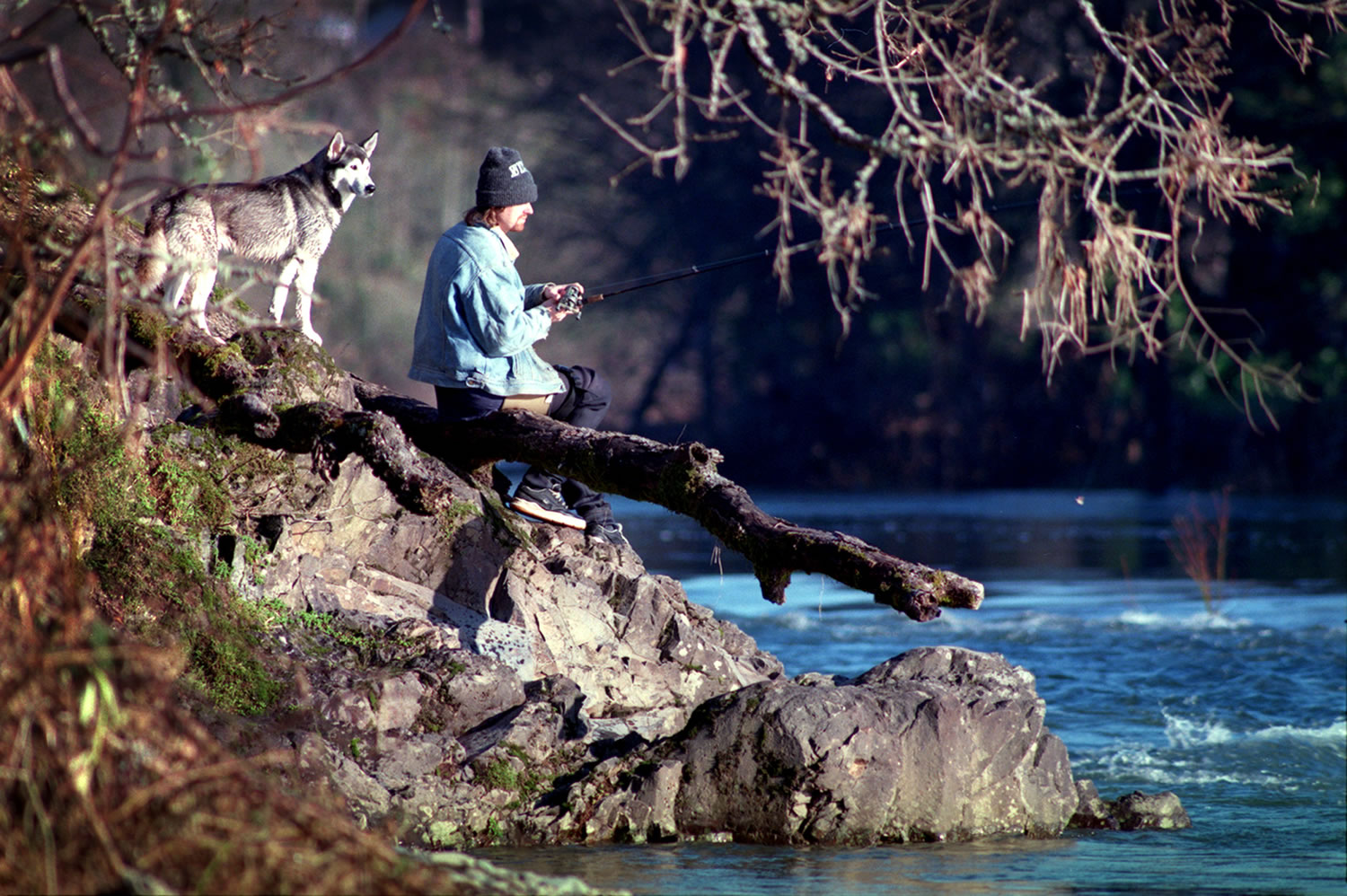Work will ramp up in September leading to an October recommendation where to eliminate hatchery steelhead releases and create a gene bank for wild fish in the Lewis or Washougal rivers.
The Washington Department of Fish and Wildlife has formed a 20-member steelhead management work group to develop regional plans for steelhead in the North Fork Lewis, East Fork Lewis and Washougal rivers plus Salmon Creek.
Federal fishery officials, along with Washington’s 2008 Statewide Steelhead Management Plan, are calling for designation of a network of watersheds where wild steelhead populations are “largely protected from the effects of hatchery programs.”
The task of preparing a plan for the four local steelhead streams began last week when the work group had its initial meeting. Members will meet again from 1 to 5 p.m. on Sept. 13 and 20 at the state Department of Fish and Wildlife office, 2108 Grand Blvd.
The thorny task of where to locate one wild steelhead sanctuary for winter-runs and one for summer-runs is next on the work group’s schedule for what’s called the “Cascade strata.” The strata also includes the Cowlitz, Toutle, Coweeman and Kalama rivers.
A work group for those four rivers recommended the North Fork of the Toutle-Green rivers be a gene bank for wild winter steelhead.
A gene bank for summer steelhead is needed from the Washougal or Lewis rivers if the North Toutle-Green passes muster for winter steelhead. In addition, because the Cascade strata is so big, more than one gene bank per stock might be desirable.
There is an almost mind-blogging overlay of rules, plans and other sideboards for the task force to wade through.
These include the federal Endangered Species Act, Statewide Steelhead Management Plan, the Hatchery Scientific Review Group guidelines, Fisheries Management and Evaluation Plan plus the Federal Energy Regulatory Commission’s licensing requirements for PacifiCorp’s three dams on the North Fork of the Lewis River.
Adding to the complications is that the East Fork of the Lewis and Washougal rivers almost — well, sort of, maybe — meet wild steelhead recovery goals.
The recovery goal of the Lower Columbia Fish Recovery Board for winter steelhead in the East Fork Lewis is 500 spawners. The 2001-12 average is 480.
The goal is 350 for wild winter steelhead in the Washougal and the average is 480. The goal for wild summer steelhead in the East Fork Lewis is 500 and the average is 630. The goal for wild summer steelhead in the Washougal is 500 and the average is 600.
But wait, those recovery goals are really a “minimum viability goal,” said Pat Frazier, a work group member and biologist for the Lower Columbia Fish Recovery Board.
The LCFRB numbers don’t factor in a variety of other concerns such as having appropriate geographic distribution of the spawners, Frazier said. The LCFRB goals are “not a healthy, harvestable population,” but more a floor that annual returns need to exceed.
Besides a recommendation on the gene bank locations, the work group will make suggestions about fishing regulations, how the hatchery production is redistributed, research needs and public outreach and education.
But the location of the gene banks — the places where hatchery releases are to end — is the big decision.
We know it won’t be Salmon Creek. The stream gets no summer steelhead, only 20,000 winter steelhead, and the wild population is too small to qualify as a gene bank.
Cindy LeFleur, regional fish program manager for the Washington Department of Fish and Wildlife, said the National Marine Fisheries Service would like an answer in October about the gene banks.
The federal agency funds the steelhead hatcheries in Southwest Washington through the 1938 Mitchell Act.
The meetings on Sept. 13 and 20 are open to the public. Comments from the public are allowed at the end of the sessions.
Although the work group makes recommendations, ultimately the Department of Fish and Wildlife makes the final decision.




